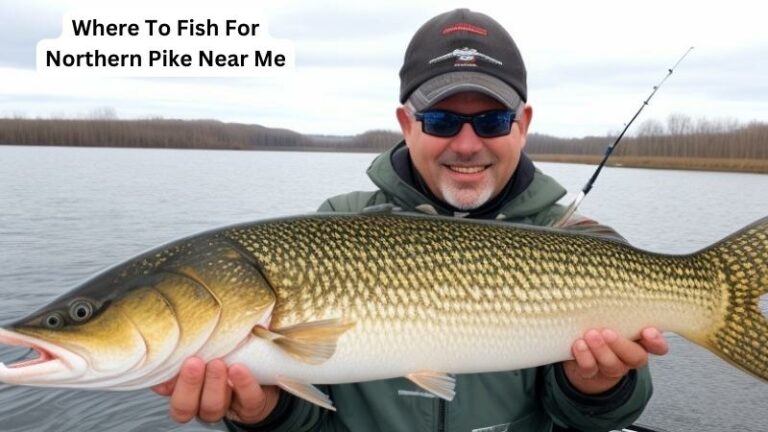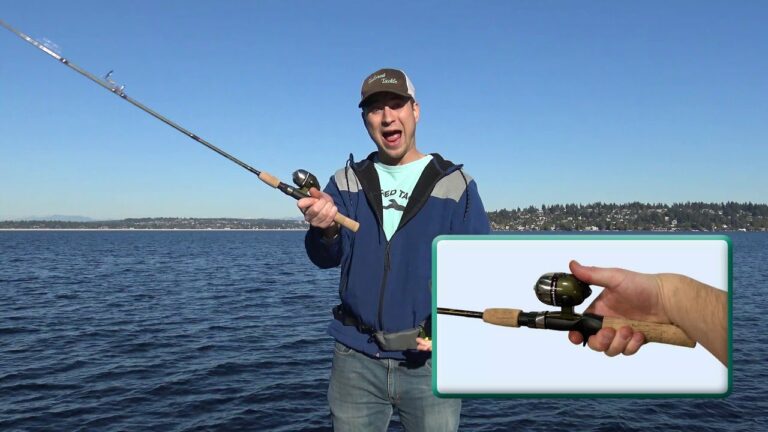Sit In Vs. Sit On Kayak: Which Is Better?
Today we discuss Sit In Vs. Sit On Kayak. Choosing between a sit-in or sit-on kayak depends on personal preferences and specific needs.
Sit-in kayaks provide enclosed and protected experiences, keeping you dry and warm in cold weather. Sit-on kayaks offer more freedom and easier access.
Consider the pros and cons of each option to make an informed choice for your kayaking adventures.
What’s Better: Sit In Vs. Sit On Kayak
Kayaking is a popular water activity that offers an exciting experience on the water. When choosing a kayak, you need to decide between a sit-in or a sit-on kayak.
Understanding the differences and advantages of each type can help you make an informed decision.
In this article, we will explore the characteristics, pros, and cons of sit-in and sit-on kayaks to help you choose the one that suits your needs.
Sit-In Kayaks: Exploring the Cozy and Versatile Option
The Basics of Sit-In Kayaks:
Sit-in kayaks, as their name suggests, are kayaks that have a closed cockpit where you sit inside the hull.
This design provides a more enclosed and comfortable experience in contrast to sit-on kayaks.
The cockpit usually includes a rim or coaming that serves as a barrier to prevent water from entering the kayak.
Enhanced Protection and Comfort:
Sit-in kayaks provide excellent protection against the elements. The enclosed cockpit offers a shield from wind, waves, spray, and cold water, making it particularly beneficial for kayaking in colder climates or rough waters.
Furthermore, sit-in kayaks typically feature adjustable foot braces and padded seats, enhancing overall comfort while paddling.
The enclosed design also offers improved back support, allowing for extended periods on the water without discomfort.
Storage Space and Gear Accessibility:
Sit-in kayaks typically offer a greater storage capacity in comparison to sit-on kayaks. They come with sealed compartments located at the front and back, providing ample space for storing gear, equipment, and supplies during extended trips.
This is especially advantageous for anglers or explorers who require additional room for their fishing gear or camping necessities.
Furthermore, the enclosed structure of sit-in kayaks makes accessing your gear more convenient.
You can effortlessly attach accessories like rod holders, fish finders, or GPS devices within easy reach, further enhancing the ease and enjoyment of your kayaking experiences.
Maneuverability and Performance:
Sit-in kayaks are highly regarded for their excellent maneuverability and performance capabilities.
The seating position within the kayak provides a lower center of gravity, resulting in enhanced stability and control.
This characteristic makes them ideal for navigating narrow waterways or tackling challenging conditions.
Moreover, sit-in kayaks are perfectly suited for engaging in activities like whitewater kayaking or sea kayaking.
Drawbacks of Sit-In Kayaks:
While sit-in kayaks offer numerous advantages, they also have a few drawbacks to consider. Here are some limitations associated with sit-in kayaks:
- The enclosed cockpit can be restrictive for individuals who prefer more freedom of movement.
- In case of capsize, sit-in kayaks require the paddler to perform a self-rescue technique such as the Eskimo roll, which requires practice and skill.
- Entering and exiting a sit-in kayak can be more challenging than a sit-on kayak, especially for beginners.
Sit-On Kayaks: Embracing the Open and Versatile Option
The Basics of Sit-On Kayaks
Sit-on kayaks feature an open deck, along with a molded seat that is positioned on top of the kayak’s hull.
This design enables paddlers to sit on the kayak rather than inside a cockpit, setting them apart from sit-in kayaks which have an enclosed cockpit.
User-Friendly and Easy Access:
Sit-on kayaks are known for being user-friendly and easy to access, making them a great choice for beginners or those who prefer a more open experience.
Getting on and off a sit-on kayak is typically a straightforward process that doesn’t require much assistance.
As a result, sit-on kayaks are popular among families, casual paddlers, and people with limited mobility.
Stability and Safety:
Sit-on kayaks are well-known for their ability to stay stable in the water. The wider design of the hull provides a balanced platform, making it easier to maintain stability and balance while paddling.
This stability is particularly advantageous for activities such as fishing, photography, or any other activity that requires a steady surface.
Moreover, in case of a capsize, sit-on kayaks are easier to reenter from the water since they lack enclosed cockpits.
This makes sit-on kayaks a safer option for individuals who may struggle with self-rescue techniques or who simply prefer a more forgiving vessel.
Improved Warm-Weather Experience:
When it comes to paddling in warm weather, sit-on kayaks are a favored option due to their open design.
The absence of a closed cockpit allows for improved air circulation, offering a refreshing experience on hot summer days.
Additionally, the open deck design makes it more convenient to take a swim or cool off in the water whenever desired.
Limitations of Sit-On Kayaks
While sit-on kayaks offer various advantages, they also have their limitations. Here are a few drawbacks associated with sit-on kayaks:
- The open deck design exposes paddlers to wind, waves, and water splashes, which can be less comfortable in colder or rougher conditions.
- Due to their wider hull design, sit-on kayaks are generally slower than sit-in kayaks, requiring more effort to paddle longer distances.
- Storage space on sit-on kayaks is usually limited compared to sit-in kayaks, making them less suitable for extended trips or activities that require extensive gear.
Choosing the Right Kayak for You:
Considerations for Sit-In Kayaks:
Sit-in kayaks are suitable for:
- Exploring colder climates or rougher waters
- Longer kayaking trips where ample storage space is required
- Activities that demand better maneuverability and performance
Considerations for Sit-On Kayaks:
Sit-on kayaks are suitable for:
- Beginners or individuals who prefer a more open and accessible experience
- Warm-weather paddling or recreational use
- Activities that prioritize stability, such as fishing or photography
Choosing the Right Design for Your Needs:
Ultimately, the choice between a sit-in or sit-on kayak depends on your specific needs, preferences, and the type of kayaking activities you plan to undertake. Consider the following factors when making your decision:
- Environmental conditions you will be kayaking in (temperature, water conditions, etc.)
- Your paddling experience and skill level
- The specific activities you plan to engage in (fishing, recreational paddling, touring, etc.)
- The amount of gear or equipment you need to bring along
- Your comfort and preference for an enclosed or open experience
Faqs for Sit In Vs. Sit On Kayak:
1. What are the differences between a sit-in and sit-on kayak?
A sit-in kayak has an enclosed cockpit, protecting the paddler’s legs from the elements.
In contrast, a sit-on kayak has an open deck where the paddler sits on top of the hull.
Both types have advantages, depending on your preferences and intended use.
2. Which is more stable, a sit-in or sit-on kayak?
Sit-on kayaks generally offer more stability due to their wider hull design.
The open deck allows for a lower center of gravity, making them less prone to tipping over.
However, sit-in kayaks can be stable as well, especially with a narrower hull design and a skilled paddler.
3. Which type of kayak is better for beginners?
In general, beginners may find sit-on kayaks more user-friendly.
They provide easier entry and exit, and are less confining, which can help boost confidence.
Sit-on kayaks are also more stable, making them a popular choice for novice paddlers.
4. What are the advantages of a sit-in kayak?
Sit-in kayaks offer several advantages. The enclosed cockpit provides protection from wind, waves, and cold water, making them ideal for colder climates or rougher conditions.
The lower seating position offers better control and maneuverability, and they are typically lighter and easier to transport.
5. Which type of kayak is better for fishing?
Sit-on kayaks are commonly preferred for fishing purposes. They offer more space and allow anglers to move freely while casting or reeling in a catch.
Sit-on kayaks also have built-in storage areas and can be easily customized with fishing accessories.
6. Can I use a sit-in kayak for recreational paddling?
Absolutely! Sit-in kayaks are versatile and suitable for various purposes, including recreational paddling.
They offer a comfortable and efficient paddling experience, and the enclosed cockpit provides a sense of security and protection.
Just ensure the kayak is suitable for the specific recreational activities you have in mind.
7. Which type of kayak is better for touring or long-distance paddling?
Sit-in kayaks are often preferred for touring or long-distance paddling.
The enclosed cockpit offers better protection against wind, waves, and water splashes, keeping the paddler drier and more comfortable during extended periods on the water.
The lower seating position also aids in maintaining stability and efficiency over long distances.
Final Thoughts:
Choosing between a sit-in or sit-on kayak depends on personal preferences and intended use. Sit-in kayaks offer more protection and are great for rough waters or cold climates.
They have a lower center of gravity, making them stable and easy to maneuver. Sit-on kayaks, on the other hand, are versatile and easier to enter and exit.
They are suitable for warm weather and calm waters, often with built-in storage and fishing features.
Consider your needs, comfort level, and the type of kayaking you plan to do when deciding between sit-in or sit-on kayaks.


